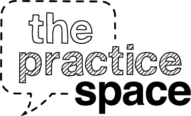RESOURCE 1
Presentations: The Life of a Leader

Why Effective Presentation Can Redefine Leadership
Presentations are opportunities for leaders to lead in a way that serves others, as opposed to simply exerting authority. Too often, leadership is portrayed to young people in terms of status and success, where leadership means you are the “best” in a group and presentations are a way to demonstrate that you know the “most”. Unfortunately, presentations that serve only to prove to everyone that you are worthy and valuable are less effective because they end up overemphasizing the quantity of content over its quality. Trying too hard to prove yourself can also result in oral delivery that is distant, defensive, and lacking in pathos, or the ability to appeal to the emotions of an audience. The end result is a presentation that is all about the slide deck instead of about connecting with people through powerful oral delivery and eye contact.
A Lead-To-Serve Mindset
While we may sometimes work or learn in places that mandate that we present to prove ourselves, we cannot let that culture dominate the way we present. For presentations to be effective, we need to think about guiding, directing, and inspiring our audiences, providing them with valuable content that will impact their thinking. When we have the mindset that leaders serve people, then our presentations become all about helping people learn, listen, and remember new information. Ask yourself:
- Why am I presenting this content?
- Why is it significant to my audience and why should they care?
- What can I teach them so that we can be on the same page about this content in the future?
- What will help them listen and retain the most important information?
- What do they need to know now and what can wait until later?
By asking ourselves questions that are oriented towards learning, presentations become vehicles for teaching content and providing audiences with a reason to listen, retain, and ultimately, connect.
Elements of Effective Presentation
When presentations are used as a tool for learning, choices about structure, sequence, and language are important to being as clear and as credible as possible. (For more guidance on how to improve your presentation structure and language and implement elements of effective presentation, see “Presentation Cheat Sheet: Tips for Structure and Language” later on in this guide.) More specifically, most effective presentations include the following elements:
Connect: Connect to the audience by referencing a common experience or concern.
Contribute: State how you will be contributing something new to the conversation.
Preview: Frame the main idea in terms of how your presentation will help the audience.
Illustrate: Teach new information by illustrating complex ideas with examples or case studies.
Synthesize: Synthesize or sum up key takeaways.
Extend: Take the main idea one step further by offering one more final thought or implication that is especially memorable.
The exact presentation structure will vary widely depending on the purpose of the talk, length, audience, context, format, and whether you are presenting with others. What to avoid, however, is jumping into complex information without preparing your audience and priming the conditions for listening. Too many presentations start without stating why we should listen to the presentation in the first place and end without stating why this content matters. As a speaker and leader, it is also important to reflect on why the presentation content excites you and matters to you. If it doesn’t, then it won’t matter to anyone else.
Adapting to Audiences
Given the focus on listening and learning, crafting effective presentations also require public speakers to consider the needs and interests of the audience. During the brainstorming process, this involves asking the following questions:
- Why am I being asked to speak?
- What does my audience already know?
- What do they want to know?
- What are they worried about?
- What are they excited about?
- What level of information interests them?
- What helps them learn?
When working with young speakers, it is important that presentations are more than just a culminating assignment. Instead, a key part of the presentation preparation process is for speakers to learn how to reflect on the purpose of the presentation and why they might be an important voice on the selected topic.
The Final Takeaway
Presentations are a classic form of public speaking that can be powerful opportunities to teach, guide, and inspire others. They are opportunities to clarify complex ideas and establish credibility as a leader who can serve people effectively. To present effectively, it is important to remember the relationship with the audience and consider how to help them learn. Rather than fading into the background, presentations are opportunities to lay the groundwork for future conversations and frame new ideas in a way that is thought-provoking, clear, and memorable.



